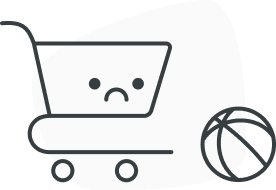In 2016, SeaWorld announced that we were ending our killer whale breeding program and that the orcas in our care are the last generation at our park. Our goal is to inspire and educate guests to take action by seeing these magnificent animals up-close to better understand why protecting wildlife and our environment is so critical today.
Killer whales at SeaWorld help killer whales in the wild.
A ticket with a mission
our visit to SeaWorld helps support animal rescue efforts, with over 41,000 and counting.
This is the last generation of orcas in our care
But, they are still here and will be cared for at SeaWorld for decades to come.
Our goal is to help our guests, and the world, explore the wonders around them, and then inspire them to take action to protect wild animals and wild places. SeaWorld’s killer whales are vital to that mission, and while they will be the last generation of killer whales at SeaWorld, they will still be around for decades to come, inspiring millions of guests and people across the globe to take action with us today.
Our goal is to help our guests, and the world, explore the wonders around them, and then inspire them to take action to protect wild animals and wild places. SeaWorld’s killer whales are vital to that mission, and while they will be the last generation of killer whales at SeaWorld, they will still be around for decades to come, inspiring millions of guests and people across the globe to take action with us today.
Meet the Whales
The opportunity to see orcas up-close has inspired millions of people, especially children, to care more about marine animals, the oceans and the environment. Below, meet the killer whales in SeaWorld San Diego's care.

Katina
Katina
Female
Katina is considered the most successful orca mother in human care, and is the matriarch of the SeaWorld Orlando pod.
Found In:

Nalani
Nalani
Female
When she isn’t spending time with her mother, Nalani regularly can be seen playing with younger brother Makaio.
Found In:

Malia
Malia
Female
Her curiosity never fades and our trainers are constantly coming up with new ways to engage her mentally and physically.
Found In:

Trua
Trua
Male
Trua has grown up loving to figure out “puzzle toys” made of individual toys stuck together with gelatin.
Found In:

Makaio
Makaio
Male
Makaio loves tactile toys that resemble kelp beds, and also enjoys playing on the slide-overs that connect the pools in the killer whale habitat.
Found In:
Research and Conservation
SeaWorld Supports Killer Whale Research and Conservation Program
SeaWorld has committed $1.5 million over three years as part of a partnership with The National Fish and Wildlife Foundation (NFWF) through the Killer Whale Research and Conservation Program (KWRCP). Support of the KWRCP is part of SeaWorld’s $10 million pledge to fund research and conservation for killer whales in the wild – the largest private commitment of its kind. The KWRCP will focus on three strategies: increasing prey availability; improving habitat quality; and strengthening management through crucial research.
Science Supporting Conservation
Scientific research performed at SeaWorld is carried out by our own research staff, and by scientists from national and internationally-renowned universities and research organizations such as UCLA, the San Diego Zoo and the Hubbs-SeaWorld Research Institute. We publish the results of our research in peer-reviewed journals, making it available to scientists, those who manage animal populations, and other interested people around the world. SeaWorld scientists have authored or co-authored hundreds of published papers.




